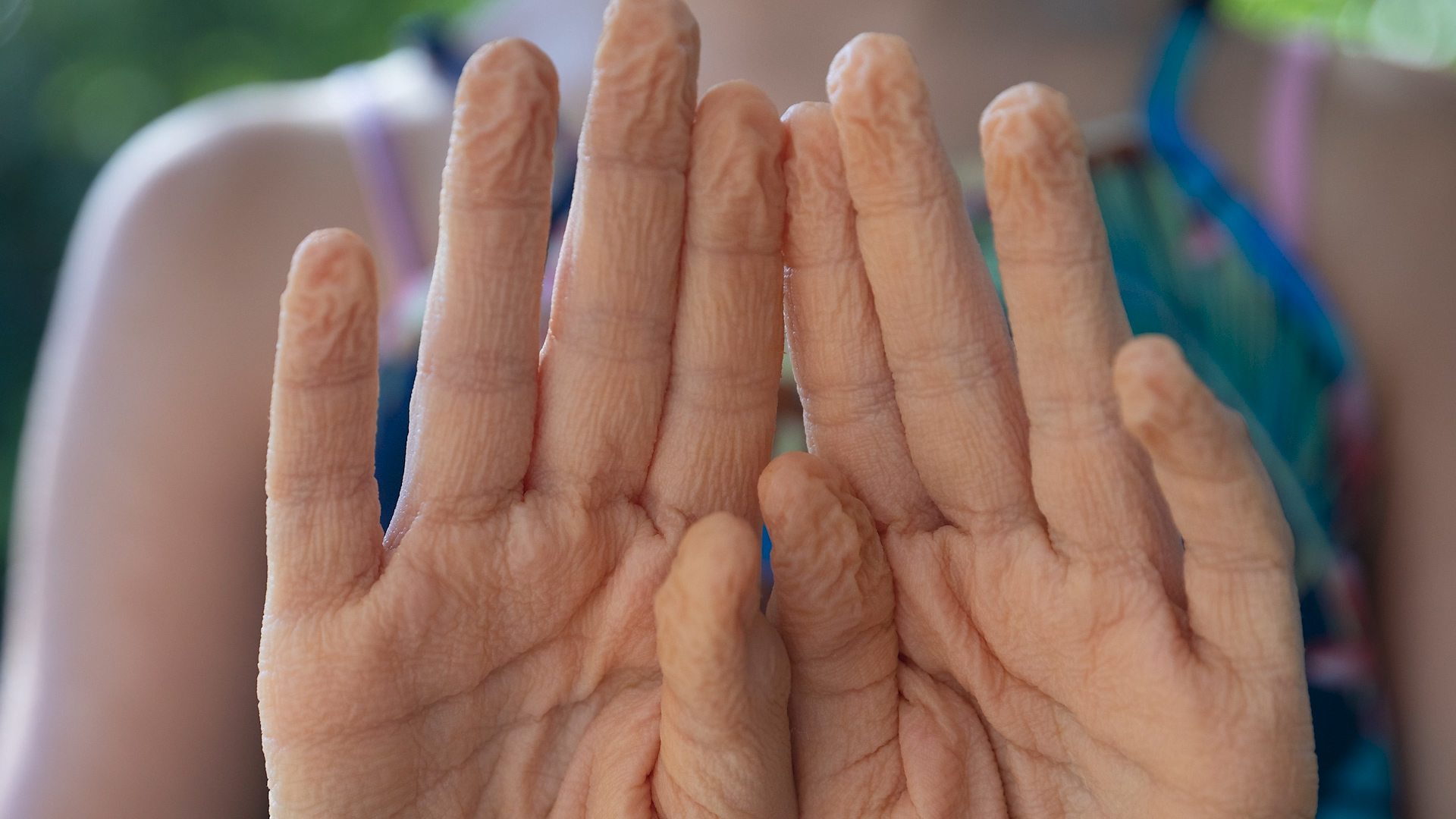The age-old question of why our fingers wrinkle in water has intrigued people across all ages. Contrary to the old belief that the skin swells like a sponge, scientists now know the explanation lies deeper, in our nervous system. Wrinkling doesn’t result from water absorption but rather from nerve activity that causes physiological changes beneath the skin.
Glabrous Skin’s Unique Nerve Structure Links Sensory Perception to Water-Induced Wrinkling
The skin on our palms and soles, known as glabrous skin, is hairless and loaded with sensory receptors that allow for detailed environmental perception. This specialized skin isn’t unique to humans—animals like the star-nosed mole and the platypus also possess glabrous skin for sensory functions. It has a higher concentration of fast-conducting nerves compared to hairy skin, suggesting a key role in sensory processing and perhaps in water-induced wrinkling as well.

A breakthrough came in 1936 when researchers noticed that patients with nerve damage from polio didn’t develop pruney fingers, no matter how long they soaked. These patients had damaged median nerves, which are crucial to the sympathetic nervous system—responsible for involuntary responses like heart rate and blood vessel contraction. This finding hinted that wrinkling was not a passive result of water exposure but an active response controlled by the nervous system.
How Water-Induced Finger Wrinkles Reveal Nerve Health and Enhance Wet Grip Ability
Later research, particularly in the 1970s and early 2000s, confirmed that the sympathetic nervous system was behind finger wrinkling. Immersion in water triggers vasoconstriction—the narrowing of blood vessels in the hands—which leads to a reduction in blood flow and causes the skin to wrinkle. This reaction serves as a subtle but effective diagnostic tool for detecting nerve damage, offering insight into the health of the body’s neural pathways.
In 2021, scientists finally discovered why this wrinkling happens in the first place. Research led by Nick Davis demonstrated that wrinkled fingers offer better grip on wet objects, providing a likely evolutionary advantage. Our ancestors may have benefited from improved traction while fishing or crossing rivers. Today, this ancient adaptation has found a new purpose: helping doctors diagnose nerve damage by observing the presence—or absence—of finger wrinkles.


